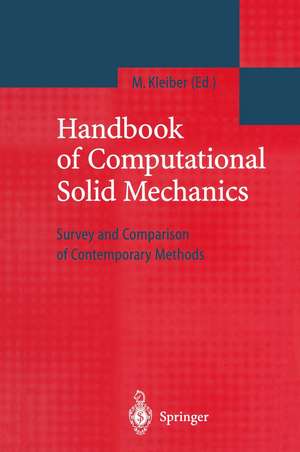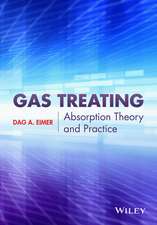Handbook of Computational Solid Mechanics: Survey and Comparison of Contemporary Methods
Editat de Michal Kleiberen Limba Engleză Paperback – 14 dec 2011
Preț: 967.71 lei
Preț vechi: 1180.14 lei
-18% Nou
Puncte Express: 1452
Preț estimativ în valută:
185.18€ • 198.01$ • 154.39£
185.18€ • 198.01$ • 154.39£
Carte tipărită la comandă
Livrare economică 18 aprilie-02 mai
Preluare comenzi: 021 569.72.76
Specificații
ISBN-13: 9783642803987
ISBN-10: 3642803989
Pagini: 788
Ilustrații: XVII, 763 p.
Dimensiuni: 155 x 235 x 41 mm
Greutate: 1.08 kg
Ediția:Softcover reprint of the original 1st ed. 1998
Editura: Springer Berlin, Heidelberg
Colecția Springer
Locul publicării:Berlin, Heidelberg, Germany
ISBN-10: 3642803989
Pagini: 788
Ilustrații: XVII, 763 p.
Dimensiuni: 155 x 235 x 41 mm
Greutate: 1.08 kg
Ediția:Softcover reprint of the original 1st ed. 1998
Editura: Springer Berlin, Heidelberg
Colecția Springer
Locul publicării:Berlin, Heidelberg, Germany
Public țintă
ResearchCuprins
I General Introduction.- 1 On Solving Problems of Mechanics by Computer Methods.- 2 Basic Equations of Nonlinear Solid Mechanics.- 3 On Approximate Solving Systems of Differential Equations.- References.- II Finite Element Method.- 1 Introduction.- 2 Selected Topics from the Mathematical Theory of Finite Elements.- 3 Fundamentals of nonlinear analysis.- 4 Problems of Dynamics.- 5 Space-Time Element Method.- 6 Plasticity Problems.- 7 Stability Problems and Methods of Analysis of FEM Equations.- References.- III Finite Difference Method.- 1 Introduction.- 2 The Classical FDM.- 3 Curvilinear Finite Difference Method.- 4 FD Method Generalized for Arbitrary Irregular Grids.- 5 Adaptive GFDM Approach.- 6 On Mathematical Foundations of the FDM for Elliptic Problems.- 7 Final Remarks.- References.- IV Boundary Element Method.- 1 Introduction.- 2 Mathematical Foundations.- 3 BEM in Linear Theory of Elasticity.- 4 BEM in Nonlinear Problems.- 5 BEM in Synthesis Problems.- 6 Final Remarks.- References.- V Optimization Methods.- 1 Numerical Approaches to Structural Optimization.- 2 Applications of Linear Programming.- 3 Applications of Nonlinear Programming.- 4 Discrete Programming in Structural Optimization.- References.- VI Methods of Sensitivity Analysis.- 1 Introduction.- 2 Classification of Structural Design Variables and Parameters.- 3 Fundamental Variational Theorems.- 4 Sensitivity Analysis for Varying Material Parameters.- 5 Structural Shape Variation.- 6 Sensitivity Analysis for Beam Structures.- 7 Sensitivity Analysis in Static and Dynamic Thermo-elasticity.- 8 Numerical Aspects of Sensitivity Analysis.- References.
Textul de pe ultima copertă
The objective of this book is to thoroughly document and discuss the influence of the most important computer-oriented techniques on formulating and solving boundary-value problems typical for contemporary solid and structural mechanics. The book is also intended to serve as an up-to-date introduction into current research on the subject. It will be useful to university researchers and graduate students, as well as to industrial engineers interested in effective solution methods in solid mechanics. Contents: - Introductory Considerations. - The Finite Element Method. - The Finite Difference Method. - The Boundary Element Method. - Numerical Methods of Optimization. - Methods of Sensitivity Analysis.










